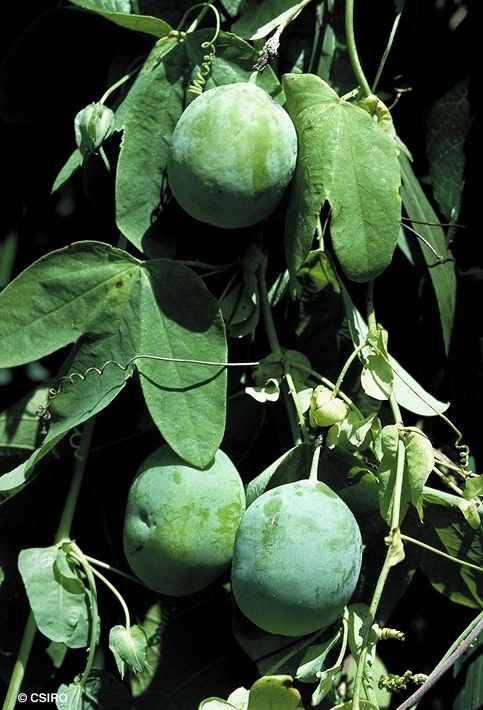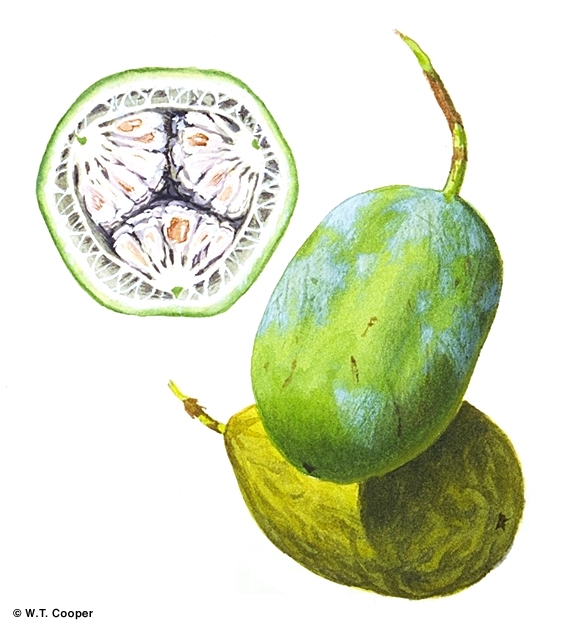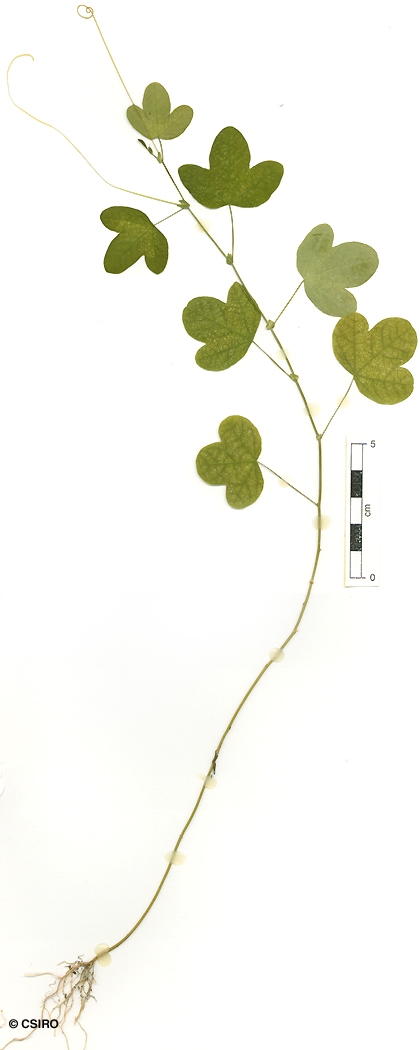Australian Tropical Rainforest Plants - Online edition
Passiflora subpeltata Ortega






Ortega, C.G. de (1798) Novarum, aut Rariorum Plantarum Horti Reg. Botan. Matrit. : 78. Type: Mexico, Sesse & Mocino 4464; holo: ?.
White Passionflower; White Passion Fruit; Wild Passion Fruit
A slender vine not exceeding a stem diameter of 2 cm.
Flowers about 4.5-5 cm diam. with three large leafy cordate bracts at the base, bracts about 22 mm long. Flower stalks (peduncles ?) about 3-4 cm long. Sepals green on the outer and white on the inner surface, about 20-25 mm long with an aristate appendage about 7 mm long attached just below the apex. Petals about 20-25 mm long. Corona consists of numerous filaments about 8 mm long in the outermost whorl and shorter structures in the innermost whorl. Staminal filaments fused to form a tube about 10 mm long around the stalk of the ovary. Free staminal filaments about 6 mm long, anthers about 7 mm long. Ovary on a stalk about 10 mm long. Styles three, each style + stigma about 10 mm long. Ovules numerous, attached to three parietal placentas.
Fruits ellipsoid, about 4.5-6 x 3-5 cm. Seeds numerous, attached to parietal placentas. Seeds +/- flat(?), elliptic, about 4.5 x 2.5-3 mm, enveloped in an aril or sarcotesta. Testa surface pitted. Embryo about 3.5-4 mm long, radicle shorter and narrower than the cotyledons. Cotyledons about 3 x 2 mm. Radicle about 0.8-0.9 x 0.5 mm.
At the tenth leaf stage: leaf blade +/- orbicular, apex obtuse to emarginate but also mucronate, base truncate to slightly cordate. Margin with one large lobe on each side and a number of teeth particularly towards the base and also on the margin in the notches formed by the lobes. Leaf blade much paler on the underside. Stems pale, somewhat glaucous or covered with a thin white waxy layer. Simple (unbranched) tendrils produced shortly after the tenth leaf. Stipules about 5 mm long, green and leafy, +/- peltate. Seed germination time 17 days.
An introduced species originally from Mexico, now naturalised in NEQ, CEQ and southwards as far as eastern Victoria. Altitudinal range in NEQ from 100-750 m. Grows as a weed in regrowth on agricultural land, also in disturbed areas on the margins of lowland and upland rain forest. Also naturalised in India, the Philippines and perhaps elsewhere in the Asian area.
This species appears to be poisonous to cattle when eaten in large quantities. Everist (1974).
Food plant for the larval stages of the Glasswing Butterfly. Common & Waterhouse (1981).





